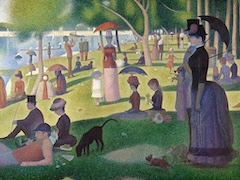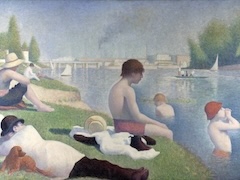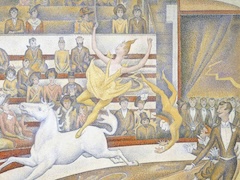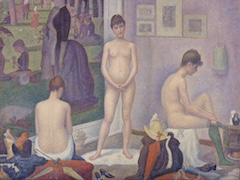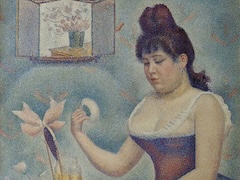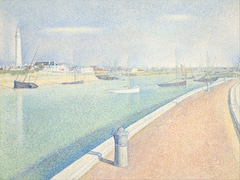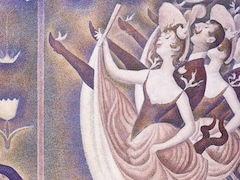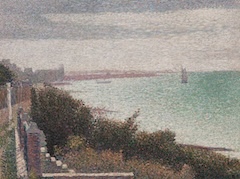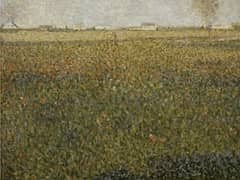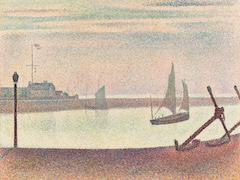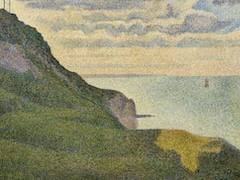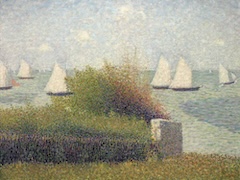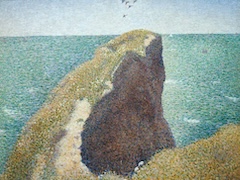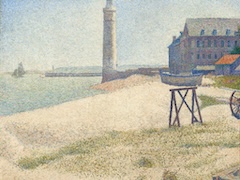Study for La Grande Jatte by Georges Seurat
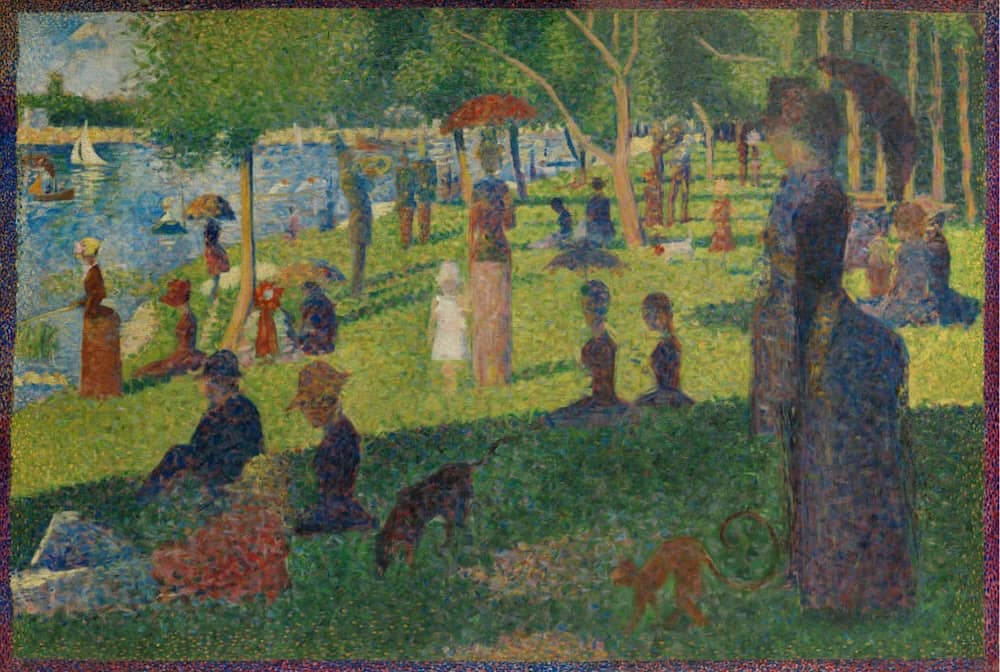
This was Seurat's last study before the final version. It is a gem of scintillating light and joy, of contrasts between light and dark (both tones and hues), a sketch for the whole picture with everything in its place. It is a highly musical work, in which time enters space on silent feet in the form of the woman with the bustle, dressed in the fashion of the day, whom the painter turned into a kind of Astarte.
From the dark tree trunk to the strongest lights - the houses and built-up riverbank in the distance, the sailboats - this is a crescendo of luminosity, colors, and sensibility. Everything in it has been grouped with great art, composed without seeming to be.
Between this study at the Metropolitan and the definitive painting in Chicago, several details will be altered. The reclining figure at left in the jockey cap will be more sharply rendered, as will also the little girl running among the trees. The background planes will gain greater depth and luminosity. Finally, the alternation of lights and shadows will be more elaborate in the Chicago painting. On the other hand, the freshness, spontaneity, subtle overtones, and sonorous density of the pigment in this canvas are not always to be found on the big canvas in Chicago. The latter to some extent makes up for this loss of youthful qualities by greater clarity of organization and articulation.
Puvis de Chavannes used to prepare his huge murals by studies representing a numbered area of the finished work. Seurat never made this mistake. He knew that the size of any picture demands a specific mode of composition and expression. This is why his big canvases and his preliminary studies for them possess their own artistic value, creative originality, and individual flavor, and why these qualities are never identical nor identically placed.

